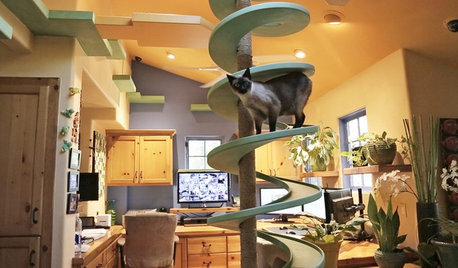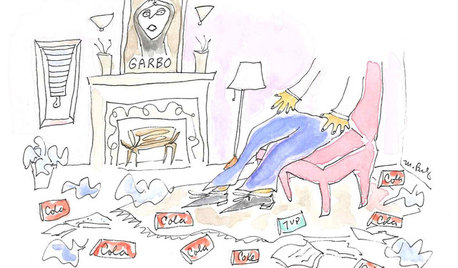suggestions for moving a feral hive?
acwest
17 years ago
Related Stories

MY HOUZZMy Houzz: 1955 Texas Ranch Moves On Up With a Modern Addition
Graphic tiles, wood accents, modern furnishings and a new second story help elevate a dated interior and layout
Full Story
FARM YOUR YARDHello, Honey: Beekeeping Anywhere for Fun, Food and Good Deeds
We need pollinators, and they increasingly need us too. Here, why and how to be a bee friend
Full Story
GARDENING AND LANDSCAPINGGenerate Buzz as a Beekeeper
Fresh honey and happy flowers are just two of the perks of a backyard beehive. These 5 guidelines will help you get started
Full Story
GARDENING GUIDESSmall Carpenter Bees Are Looking for a Home in Your Plant Stems
Provide flowers and nesting sites in your garden for this beautiful, tiny, metallic blue wild bee — your plants will thank you
Full Story
HOUZZ TOURSMy Houzz: Ease and Coziness in Rural Australia
Nothing is ‘too fancy or perfect’ in this 150-year-old bluestone farmhouse, but everything sure is warm and inviting
Full Story
PETSIncredible Home Catwalks Make for Purr-fectly Happy Felines
Walkways and tunnels custom built to the tune of about $35,000 keep a homeowner’s 18 cats on cloud nine
Full Story
PETSHouzz Pets Survey: Who Rules the House — Dogs or Cats?
New data shows that pets make people happy, and pet owners love spending big to return the favor
Full Story
MOST POPULARHouzz Tour: Easygoing and Elegant in White, Cream and Gray
The renovation of an 1860s Massachusetts home creates a sophisticated, serene and comfortable living space
Full Story
GARDENING GUIDESLessons in the Rewards of Selfless Gardening
Let go of gardening for your own vision and watch the garden’s own true vision come forth
Full Story
LIFEPortrait of a Terrible Housekeeper
Even in hair-raising tales and harebrained organizing schemes, there's something we can learn
Full StorySponsored






bandit_tx
acwestOriginal Author
Related Professionals
Kapaa Landscape Architects & Landscape Designers · Salisbury Landscape Architects & Landscape Designers · South Orange Landscape Architects & Landscape Designers · San Juan Landscape Architects & Landscape Designers · Washington Landscape Architects & Landscape Designers · Belmont Landscape Contractors · Englewood Landscape Contractors · Fruit Heights Landscape Contractors · Northbridge Landscape Contractors · St. Louis Landscape Contractors · Tamarac Landscape Contractors · The Villages Landscape Contractors · Welby Landscape Contractors · New Carrollton Landscape Contractors · Silver Firs Landscape Contractorsccrb1
acwestOriginal Author
bud56
acwestOriginal Author